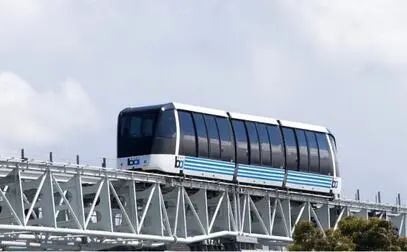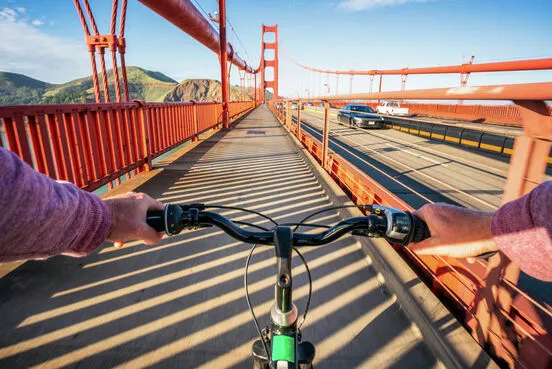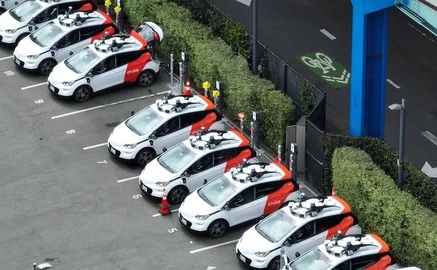Hey there, future San Francisco explorers! If you’re thinking about visiting this amazing city, you’re in for a treat. San Francisco is packed with iconic landmarks, beautiful scenery, and vibrant neighborhoods.
But here’s a fun twist—how about exploring it all things to do in san francisco without a car? That’s right! Ditch the car, avoid the traffic, and dive into the city’s excellent public transportation options. This guide will show you how to navigate San Francisco easily and make the most of your trip.
Why Explore San Francisco Without a Car?
- Avoid Traffic and Parking Hassles: San Francisco’s streets can get pretty crowded, and parking is often a nightmare. Going car-free means no more stress over finding a parking spot.
- Environmental Impact: Using public transportation or biking is much kinder to the environment. You’ll be helping to reduce pollution and keep the city beautiful.
- Enhanced Experience: Walking, biking, and using public transit let you experience the city up close and personal. You get to soak in the local culture and vibe in a way you can’t from behind the wheel.
Public Transportation Options
Muni (San Francisco Municipal Railway)
Muni operates buses, light rail, and cable cars across the city. It’s a comprehensive and affordable way to get around.
Key Routes and Popular Lines
- Buses: The 38-Geary, 14-Mission, and 30-Stockton are essential for getting around downtown and connecting to various neighborhoods.
- Light Rail: The N-Judah and L-Taraval lines are popular for tourists of San Francisco City Tour, with stops near major attractions.
- Cable Cars: The Powell-Hyde and Powell-Mason lines offer scenic routes and are must-rides for any visitor.
BART (Bay Area Rapid Transit)

BART connects San Francisco with neighboring cities and the airport. It’s a fast and efficient way to travel longer distances.
Key Stations
- Embarcadero: Close to the Ferry Building and Financial District.
- Powell Street: Near Union Square and a major shopping area.
- 16th Street Mission: Access to the Mission District’s vibrant food and cultural scene.
Using BART to Connect with Nearby Areas: BART is perfect for day trips to Berkeley, Oakland, or other Bay Area locations. It’s also the best way to reach SFO airport from the city center.
Caltrain
Caltrain runs from San Francisco to San Jose, passing through the Peninsula.
Connecting Cities in the Bay Area: Ideal for exploring Silicon Valley or visiting friends and Family Adventure Vacations.
Best Stops for Tourists
- 4th and King: The main San Francisco station, convenient for downtown and SOMA.
- Palo Alto: Close to Stanford University and the charming downtown area.
Specialty Transport
Cable Cars
San Francisco’s cable cars are a historic landmark, dating back to the late 19th century. They offer a nostalgic and scenic way to explore the city’s hilly terrain.
Popular Lines and Must-Try Routes:
- Powell-Hyde Line: Offers spectacular views of Alcatraz and the Bay.
- Powell-Mason Line: Takes you through North Beach and Fisherman’s Wharf.
- California Street Line: A quieter route with fewer tourists, perfect for a relaxed ride.
Streetcars (F-Line)
The F-Line operates vintage streetcars along Market Street and the Embarcadero. Each car is a piece of history, with origins from cities around the world.
Tips for Riding the Historic Streetcars: Board at the ends of the line (Castro or Fisherman’s Wharf) to avoid crowds. Have your camera ready for picturesque views along the way.
Biking Around the City

Bay Wheels, a bike-sharing program, provides an easy way to rent bikes across the city. Simply download the app, find a bike, and start exploring.
Popular Biking Routes and Bike-Friendly Areas
- Golden Gate Park: A scenic and relaxing ride through one of the city’s largest green spaces.
- The Embarcadero: Ride along the waterfront with views of the Bay Bridge and access to the Ferry Building.
- Marin Headlands: For more experienced cyclists, cross the Golden Gate Bridge and explore this beautiful area.
Safety Tips and Bike Lane Information: Always wear a helmet, follow traffic laws, and stick to designated bike lanes. San Francisco’s bike network is extensive, but some areas are hilly and require caution.
Walking Tours
Walking allows you to experience the city’s neighborhoods up close. You’ll discover hidden murals, quaint cafes, and architectural details that are easily missed when driving.
Recommended Walking Tours and Itineraries
- Golden Gate Bridge to Crissy Field: Start at the Golden Gate Bridge and walk down to the scenic Crissy Field.
- Chinatown and North Beach: Explore the vibrant streets of Chinatown, then head to North Beach for Italian cuisine and historic sites.
- Haight-Ashbury to Alamo Square: Stroll through the famous Haight-Ashbury district, then head to Alamo Square for the iconic Painted Ladies.
Tips for Navigating the City’s Hills and Landmarks on Foot: Wear comfortable shoes and be prepared for steep inclines. Take your time and enjoy the views at the top of each hill.
Ferries and Water Transport
Ferries offer a unique perspective of the city and are a relaxing way to travel across the Bay.
Popular Routes
- Sausalito: A picturesque town with waterfront dining and shops.
- Alcatraz Island: The ferry ride offers stunning views of the city skyline and the infamous prison.
- Tiburon: Another charming waterfront town with easy access to hiking and biking trails.
Schedules and Booking Tips: Ferries run frequently, but it’s best to check the schedule and book tickets in advance, especially for Alcatraz.
Scenic Routes and Sightseeing Opportunities: The views from the ferry are unbeatable, offering photo ops of the Golden Gate Bridge, Bay Bridge, and the San Francisco skyline.
Ride-Sharing and Taxis

Uber and Lyft are widely available in San Francisco to travel the top 10 places in San Francisco and are great for short trips or when public transport isn’t convenient.
Taxi Services and How to Hail a Cab: Taxis are less common but can be found at major hotels and transportation hubs. You can also call for a cab or use a taxi app.
Pros and Cons Compared to Public Transport: Ride-sharing offers convenience and door-to-door service but can be more expensive than public transport, especially during peak times.
Planning Your Route
Tools and Apps for Planning Your Journey: Use Google Maps, Transit App, or the official MuniMobile app to plan routes, check schedules, and get real-time updates.
Combining Different Transportation Modes for Efficiency: Mix and match transportation options for the most efficient routes. For example, take BART to the Mission District and then a Muni bus to Golden Gate Park.
Budgeting for Transportation
Costs of Various Transportation Options
- Muni: $3 for a single ride, $13 for a day pass.
- BART: Fares vary by distance, typically $2-$5 within the city.
- Caltrain: $3.75-$11.25 depending on the destination.
- Cable Cars: $8 per ride.
- Bike Sharing: $3 per ride or $15 for a day pass.
Tips for Saving Money
- Day Passes: Buy a Muni day pass for unlimited rides.
- Clipper Card: Use a Clipper Card for discounted fares on Muni, BART, and Caltrain.
- Combo Tickets: Look for combo tickets that include attractions and transportation.
Comparison of Costs Between Different Modes: Public transport is generally more cost-effective than ride-sharing or taxis, especially for longer stays.
Conclusion
Exploring what to do in San Francisco without a car is not only doable but also incredibly fun and rewarding. You’ll get to experience the city’s unique charm, avoid the stress of driving, and contribute to a greener environment. So grab your transit map, hop on a bike, or just start walking. San Francisco is ready to be discovered, one public transport ride at a time. Enjoy your car-free adventure!

Leave a Reply